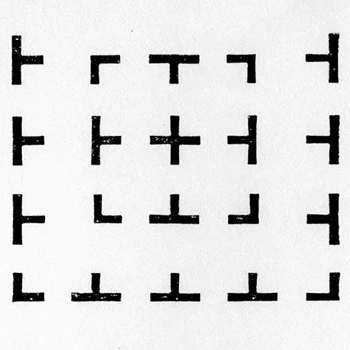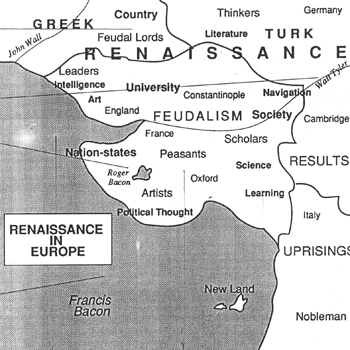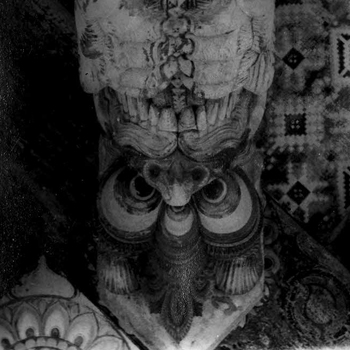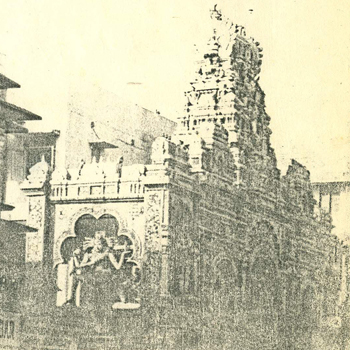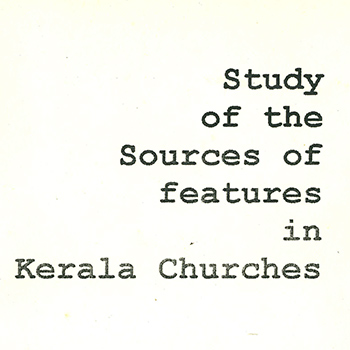Communication Design
Batch 1991-1993
(9 items)
Communication DesignBatch 1991-1993
(9 items)
(9 items)
by Ashwini Phadke
"Various literatures like the Vedas, Shastras, epics, historical accounts, and poetry books can be printed in various ways (frequently) at a fair price."
This oath taken by Jaoji Dadaji Choudhari regarding the Nirnay Sagar Type Foundry seems appropriate.
NIRNAY SAGAR ERA
Jaoji Dadaji Choudhari (1839–1892), aka 1760, was the founder of Nirnay Sagar Type Foundry.
1848: He joined the American Mission Type Foundry at the age of ten, employed in rubbing types. I worked for ten years.
1859: The press was taken over by Exchange Press, now known as The Times of India.
1862: After one and a half years, I joined Indu Prakash Press as a typecaster.
1862: Oriental printing press; assigned work of typefounding
1864: Started his own type foundry.
1866 Indu Prakash type foundry was handed over to Jaoji, as stated in a note published in Indu Prakash (April 11, 1892).
Jaoji started his type foundry only after mastering the art, as he learned from Thomas Graham (as acknowledged by Ranoji Raoji Aru). Jaoji was assisted in typesetting by Ranoji Raoji Aru. Jaojis types were universally acclaimed and were in demand in many foreign countries, where they are still in use. 1868: Undertook printing of the Almanack prepared by Vithal Sakharam Agnihotri. It was a twelve-page typed document.1719: He composed Panchang Saka in the types specially cut by him, which were later printed in 1869. Nirnay Sagar Press was started with only one Super Royal hand press. The first book printed was the Garud Purana (in Sanskrit).
by Deborani Dattagupta
The inspiration and purpose behind pursuing this project topic can be traced back to an article in the 1988 autumn issue of Visible Language. The article, Instant Theory: Making Thinking Popular, by Craig J. Saper, explores the hows and whys of evolving a public theory for the understanding of various media and culture.
A public theory increases access to strategies and information on learning and innovations. This article states that there have been previous attempts by concrete poets to popularise thinking in the form of pattern recognition and puzzle solving. In fact, it is this attempt that guides this essay as it studies the views of other theorists to explore alternative systems for representing our knowledge. These alternative systems help build an entire cultural setting for the spread of ideas. It also includes the possibility of dissolving accumulated theories into thinking images.
Before elaborating on the alternative systems, a brief introduction to concrete poetry is essential to understanding why it is important to study concrete poetry in the context of instant theory.
by Hashim P M
In our daily lives, we come across more and more visual and verbal information. Ever since writing has been used to store thoughts, the written word has been used to convey information. Text has been playing a major role in communication in all media. Text manifests itself in different forms in books, magazines, newspapers, leaflets, brochures, etc. (print media), computer screens, television, video (electronic media), signage, environmental graphics, and most likely in all future media too. Though it is said that a picture is worth a thousand words, it takes words to bring out this exact message.
With the importance of text known to all, several methods have been devised to present text in its most appropriate form. From the micro level to the macro level, many methodologies are being used to enhance text. At the micro level, the fundamental unit of text, the alphabet, has been made available in different styles (typefaces), and at the macro level, various ways of organising text have been experimented with. Over the years, several norms have been accepted as essential to the organisation of text.
Organisation is described in the dictionary as a systematic arrangement or giving an orderly structure to or forming into an organic whole, etc'. It can be said that organisation leads to structure and order. Since order helps in learning, this in turn aids in easy retrieval of information.
We know how a newspaper looks, or how a magazine, a paperback novel, or a chequebook would look. Many of these norms have been taken for granted, and we only become aware of them when they are drastically altered. The organisation of the text has established these norms.
by Manali Pai
Vy?la is a composite animal, a combination of the facial parts of a number of beasts. They are creatures of fancy regarded as powerful presences of nature, composite marks symbolising existence in varying individual animals and self-preserving the world in the 50 created creature powers of the natural the very of imagination.
As an adjective, vy?la means wicked or vicious, in the sense that they may be seen as forms that ultimately ward off the evil eye from the auspicious buildings. The interest in them is more than their symbolic or functional meaning. They stand out as finely realised forms complete in themselves.
The nature of fantasy in vy?las is that it is playful and inventive, as shown in its appearances and motifs.
Vyála is also the name of the animal shape "made by art."
(Krttima-gr?sa., ref: Samar?ng??as?tradh?ra)
It is known as Virala in Orissa or vy?la , particularly, in South India. The protean animal made by art always has the body of a lion and its more prominent versions, as well as its face. It is a symbolic shape and corresponds, within the manifestations, to the face of the glory, the mask of Asura.
The vy?la could mean a tiger, a leopard, a panther, a demon, a kind of bird or animal that is stronger than the lion of the natural world, or it could mean having more than four legs and of which there is no likeness on earth.
by Ravi Krishnan L
In most of the metropolitan cities and other urban centres in India, the immigrants coming from different cultural regions tend to simulate their regional, cultural, and social environments. Such simulation of their regional culture in an urban situation leads to the characteristic community life of the immigrants of the city. The process of simulating the regional culture in the urban area is facilitated by the residential segregation of the immigrants, who tend to cluster around relatives and other immigrants belonging to their own region, caste, language, religion, and class. The simulation of regional culture in the city is selective in the sense that the immigrants do not bring to the city the entire joint family, but only the nuclear family. Probably because they cannot afford to bring every one. Therefore, they find all the more need for simulating the culture of their place of origin, for they do not want to be left without traditional moorings, lest their families feel lost in the city. Moreover, because of the presence of their wives and children in the city, the immigrants are likely to find a greater need for security, which is provided by the ethnic community, which simulates the culture of their place of origin.
In the process of simulating the culture of their origin, the community will not be able to perfectly replicate it within the urban area. They may have to make some functional adaptations in the city, and therefore, what one might find is a near-approximation of the native culture in the urban situation. 'Assimilation' is the term used to describe this process of adaptation. This results in a kind of "give and take,"' whereby a community dilutes or discards part of its culture by accepting others. The immigrants will not and need not adjust, adapt, acculturate, or assimilate in all spheres of life.
A migrant may feel ill at ease in a new social environment, but may feel adjusted to the professional sphere. There may be adjustments in certain aspects of life and even conflicts in others. Within various spheres of immigrant social life, there is likely to be a conflict of values between the old and the new.
by Satish Babusanan
Christianity in Kerala has supposedly existed since the 1st century A.D. It is said that St.Thomas, Apostle of Christ, came to Kodungalloor, a village port in Kerala, in 52 A.D. He began by converting four high-caste Brahmin families (thus called Nalillakkar), and soon a substantial number of people were converted to Christianity. St.Thomas himself is believed to have soon left for China and, on his way back to Mylapore, near Madras, was killed and buried there. The descendants of the converts from St.Thomas's time call themselves the Thomas Christians.
The Thomas Christians built their places of worship and supposedly settled down as a respected community living in harmony with the Hindus. The Kings of Travancore are said to have given them great honour and freedom. Certain copper plates to this effect are in the possession of the Thomas Christians.
For these reasons, the churches that they built are very much like the Hindu temples of the region. In most cases, at a casual At first glance, the only strict differences one would notice are the use of the cross and, on closer inspection, Christian motifs on the sculpted walls of the interior.
The liturgical rites of the Thomas Christians were always East Syrian. In the 4th century, one Thomas of Cana came to Kodungalloor with about three to four hundred Palestinian families. This resulted in a schism between the Syrians and the native Christians, creating Southerners and Northerners, respectively. The Roman influence began to creep in around the 13th century. Marco Polo was the first Roman to appear in Malabar. But he was in the service of Kublai Khan, who was an anti-Roman Venetian and had no ambitions for religious work.
by Somya Kumar
Before India's independence, the Indian press functioned as a crusading agent for the freedom of the country. The newspapers then carried lengthy speeches of political leaders that served the purpose of ammunition. Thus, these demands of the freedom movement led the press to adopt a serious tone in its treatment. The fact that the newspaper had to function as the spearhead of the nationalistic movement left its mark on the profession as a whole.
As long as India was a dependent country, the press had to function as one entity to address arguments. After independence, however, the general consensus gradually lost its intensity, and the emphasis shifted from national to local problems. However, many newspapers till late 1950 still carried the format of lengthy and elaborate argumentation and political speeches of politicians. By 1965, sections of the press in Uttar Pradesh, Bihar, Orissa, Madhya Pradesh, and elsewhere had turned themselves into provincial papers largely concerned with local problems.
by Sukanya Sarkar
Writing is the visual counterpart of speech. Marks, symbols, pictures, or letters drawn or written upon a surface or substrate become the graphic counterpart of spoken words or unspoken thoughts. The limitations of speech are the fallibility of human memory and an immediacy of expression that cannot transcend time and place. Until the present electronic age, the spoken word vanished without a trace, but the written word remained.
The invention of writing brought the lustre of civilization to people and made it possible to preserve hard-earned knowledge, experiences, and thoughts. The development of writing and visual language had its origins in simple pictures, with a close connection existing between the drawing of the pictures and the marking of writing.
Both are natural ways of communicating ideas, and primitive man used pictures as an elementary way to record and transmit information. Perhaps in the cave paintings, the pigment was smeared onto the walls with a finger, or a brush was fabricated from bristles or reeds. This was not the beginning of art as we know it; it was the drawing of visual communications because the first pictures were made for survival and were created for utilitarian and ritualistic purposes. The presence of what appear to be spear marks on the sides of some of these animal images indicates that they might have been used in magical rites designed to gain power over animals and success in the hunt. Or perhaps they were teaching aids to instruct the young on the process of hunting as a cooperative group effort. Abstract geometric signs, including dots, squares, and other configurations, are intermingled with the animals in many cave paintings. Whether they represent man-made objects or are proto-writing is not known. It will never be known with any certainty because they were made before the beginning of history, the 5,000-year period during which people have recorded in writing a chronicle of their knowledge of facts and events. The animals painted on the cayes are pictographs, elementary pictures, or sketches that represent the things depicted.
by T V Praseed

